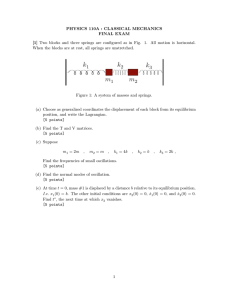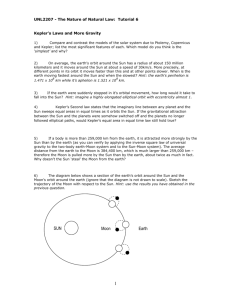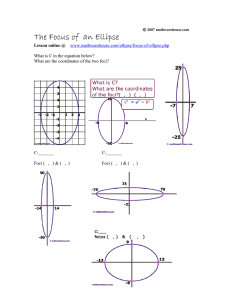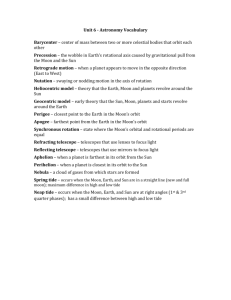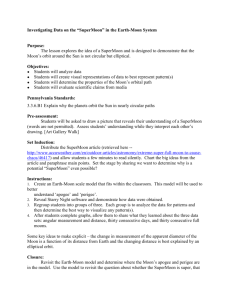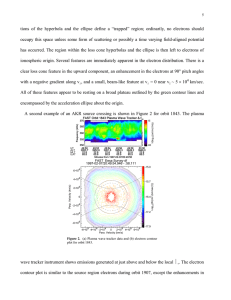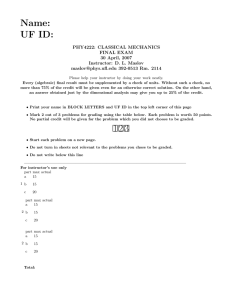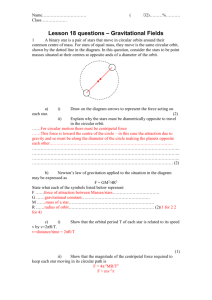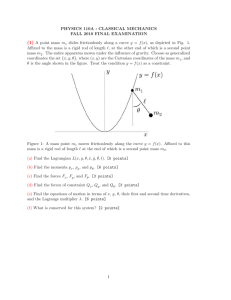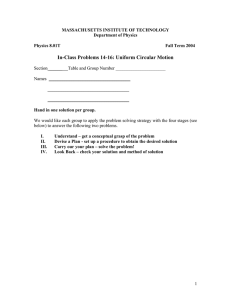Physics 2a, Nov 30, lecture 29
advertisement
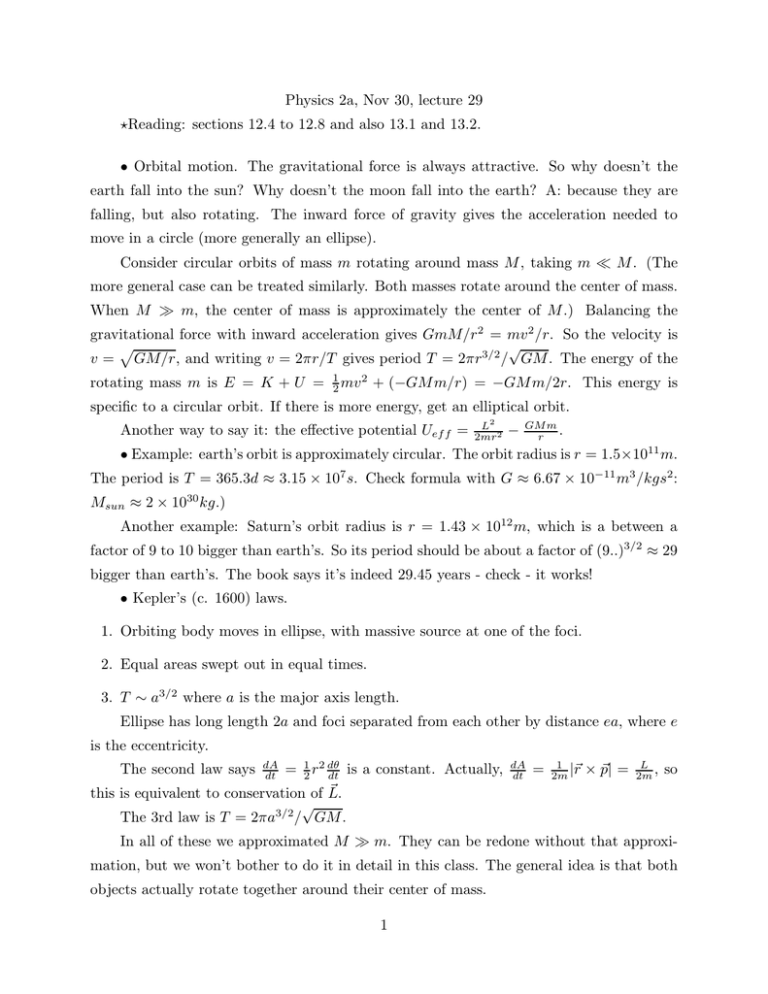
Physics 2a, Nov 30, lecture 29 ⋆Reading: sections 12.4 to 12.8 and also 13.1 and 13.2. • Orbital motion. The gravitational force is always attractive. So why doesn’t the earth fall into the sun? Why doesn’t the moon fall into the earth? A: because they are falling, but also rotating. The inward force of gravity gives the acceleration needed to move in a circle (more generally an ellipse). Consider circular orbits of mass m rotating around mass M , taking m ≪ M . (The more general case can be treated similarly. Both masses rotate around the center of mass. When M ≫ m, the center of mass is approximately the center of M .) Balancing the gravitational force with inward acceleration gives GmM/r 2 = mv 2 /r. So the velocity is p √ v = GM/r, and writing v = 2πr/T gives period T = 2πr 3/2 / GM . The energy of the rotating mass m is E = K + U = 1 2 2 mv + (−GM m/r) = −GM m/2r. This energy is specific to a circular orbit. If there is more energy, get an elliptical orbit. Another way to say it: the effective potential Uef f = L2 2mr2 − GM m . r • Example: earth’s orbit is approximately circular. The orbit radius is r = 1.5×1011 m. The period is T = 365.3d ≈ 3.15 × 107 s. Check formula with G ≈ 6.67 × 10−11 m3 /kgs2 : Msun ≈ 2 × 1030 kg.) Another example: Saturn’s orbit radius is r = 1.43 × 1012 m, which is a between a factor of 9 to 10 bigger than earth’s. So its period should be about a factor of (9..)3/2 ≈ 29 bigger than earth’s. The book says it’s indeed 29.45 years - check - it works! • Kepler’s (c. 1600) laws. 1. Orbiting body moves in ellipse, with massive source at one of the foci. 2. Equal areas swept out in equal times. 3. T ∼ a3/2 where a is the major axis length. Ellipse has long length 2a and foci separated from each other by distance ea, where e is the eccentricity. = 12 r 2 dθ dt is a constant. Actually, ~ this is equivalent to conservation of L. √ The 3rd law is T = 2πa3/2 / GM . The second law says dA dt dA dt = 1 r 2m |~ × p~| = L 2m , so In all of these we approximated M ≫ m. They can be redone without that approxi- mation, but we won’t bother to do it in detail in this class. The general idea is that both objects actually rotate together around their center of mass. 1 • Next time you see a big wave at the beach, ask yourself where that energy came from. Storms mostly, but also the moon contributes, with tidal forces. Tidal forces are slowly making the earth’s days longer. The lost angular momentum of earth’s slowing spin goes into the rotation of the moon, keeping total L conserved. Because of this the distance to the moon is slowly increasing. The potential energy increases, but the rotational energy decreases. Overall, there is energy lost from KE+PE, converted into heat. p 2GM/R = c gives RS = • Fun application: black holes. Escape velocity v = 2GM/c2 . This is the place of no return. Einstein’s theory of general relativity shows, among other things, that stronger gravity makes clocks run slower. Atomic clocks are super accurate and can measure this even for clocks differing in height above the earth by a meter or so. The GPS system is so tuned and accurate that it needs to account for this effect! 2
